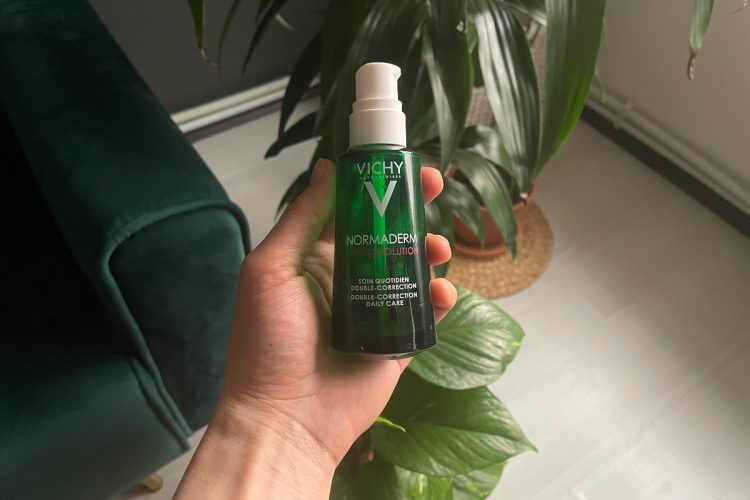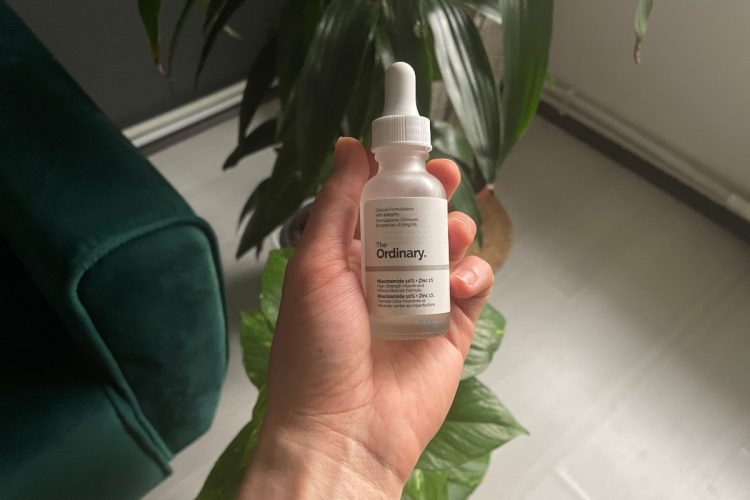We’re all fond of skincare cocktails, and since salicylic acid and niacinamide are some of the hottest ingredients of all time, it’s no surprise everyone is wondering if they can be used together. So let’s get straight to the point: yes, you can have both in your routine, and pairing them might be the fast track to perfect skin. But as good as it may be, this duo does not address all skin issues and might even react badly in some particular cases. That’s why I’m here to help you arm yourself with all the facts about these powerhouses so that you can be confident about using salicylic acid and niacinamide together. I have a good experience with both ingredients, and I have used them in countless different products that delivered varying results, with some doing better than others.
So let’s start with the very basics.
What is salicylic acid?
Salicylic acid is a beta-hydroxy acid (BHA) that exfoliates the skin by breaking the bond between dead cells. The thing with salicylic acid is that, unlike other acids, it’s oil-soluble and can sink beneath the epidermis to disperse excess sebum and unclog congested pores. Also, it has anti-inflammatory and antibacterial effects, which means it can reduce inflamed pimples and pustules and help kill bacteria. For all these reasons, salicylic acid is ideal for treating acne and reducing the chances of blackheads, and it’s often the go-to for people with oily skin prone to breakouts.
Moreover, this BHA has been researched to improve melasma (a condition that causes dark patches of the skin) and photodamaged skin due to its exfoliating and UV-protecting properties.[1][2]
What is niacinamide?
Niacinamide is a form of vitamin B3 with antioxidant effects that builds proteins and lipids in the skin. Essentially, niacinamide spurs collagen growth, a protein that supports skin structure and elasticity.[3]
It also increases the production of the lipids that form the epidermal barrier (ceramides, fatty acids, and cholesterol) that function to moisturize and protect the skin from external threats such as chemicals, bacteria, and pollution.[4] And due to its antioxidant activity, niacinamide is great at scavenging free radicals, the biggest culprits responsible for premature skin aging. In other news, niacinamide has a key role in helping skin retain moisture and protecting it against external damage and photoaging.
Other things niacinamide can do for your skin include balancing sebum levels, brightening dark spots (it acts on the pigment that darkens the skin), shrinking large pores, and easing swelling (through its anti-inflammatory effects).[3]
Should you use niacinamide and salicylic acid as a part of your skincare routine?
There should be no problem with using salicylic acid and niacinamide together in your skincare routine. In fact, your skin will love this duo, especially if you’re dealing with blemishes, blackheads, whiteheads, excess sebum, clogged or large pores, uneven skin tone or texture, and age marks. After playing with these ingredients for more than a year, I can say out loud that they complement each other well and form a skin-saving team that works on different fronts to improve various skincare issues.
If you take a glance at both ingredients, you can easily spot some of the key benefits of combining salicylic acid and niacinamide.
- Salicylic acid temporarily weakens the epidermal barrier and may strip the skin of moisture due to its exfoliating properties. Niacinamide mitigates these effects by strengthening the lipid barrier and helping the skin retain moisture, thereby increasing the skin’s tolerance to salicylic acid when applied after.
- Both salicylic acid and niacinamide have acne-fighting properties, so they work in tandem for breakout-prone skin to heal pimples.
- Both actives have been found effective for improving photodamaged skin and reducing sun damage, which indicates that they can be used together as a prevention treatment for aging signs.
- Both have abilities to reduce acne-scarring.
- Both work to brighten dark spots and promote an even-looking complexion. While salicylic acid exfoliates the pigmented surface cells, niacinamide attacks the pigment responsible for dark spots.
- And finally, my favorite perk of this duo. As someone with oily skin and large pores, salicylic acid and niacinamide helped me a lot to balance my complexion. Since both ingredients work to reduce sebum production, they balance oil and reduce the chances of pore clogging. Also, salicylic acid dissolves the gunk trapped in pores to clear them, while niacinamide tightens the skin around to pores to make them appear smaller.
Who should use salicylic acid and niacinamide?
Salicylic acid and niacinamide have some benefits in common, such as anti-inflammatory and sebum balancing. This means that people with acne have the most to win from teaming them up. All things considered, you should use niacinamide with salicylic acid if:
- You have pimples, blackheads, or whiteheads.
- You have oily skin with large pores and want your complexion to appear less greasy and pores smaller and tighter.
- You have congested skin, aka clogged pores.
- You want to eliminate blemishes.
- You want to prevent or reduce acne scars.
- You spend a lot of time outdoors and want to increase your skin defense against UV damage.
- Your skin can’t tolerate salicylic acid alone.
P.S.: If your goal is to diminish aging signs, I wouldn’t count on salicylic acid, though. It’s true that salicylic acid has some restorative effects in supporting aged skin, such as exfoliation and photoprotection, if applied before UV exposure.[2] However, there are other better options in terms of acids that work more synergically with niacinamide to fight against fine lines and wrinkles. Teaming niacinamide with glycolic acid or niacinamide with lactic acid can result in a more potent treatment for anti-aging. Both are AHAs that have been proven more effective in diminishing aging spots compared to their counterparts, BHAs.
Who can’t use salicylic acid and niacinamide?
While salicylic acid and niacinamide is a combo that addresses most people’s skincare needs, it’s not for everyone. The problem is not niacinamide, which is fairly tolerated by most, but salicylic acid. You see, salicylic acid has the reputation of overly drying the skin and impairing the epidermal barrier, which can result in redness, irritation, and dryness in some.
The takeaway? If your skin is dry, eczema-prone, or extremely sensitive, you should err on the side of caution when using salicylic acid products. You can still safely use niacinamide, though.
How to use them together
Considering you are a good candidate for this cocktail, here’s how to use salicylic acid with niacinamide to get the best of both worlds:
- Apply them at different times of the day. The niacinamide product in the morning and salicylic acid at night.
- Apply them 20-40 minutes apart.
- Use them on different days.
- Use a product that contains both.
Before I explain the how-tos, here’s what you shouldn’t do. You should avoid layering niacinamide immediately over a salicylic acid exfoliant. This is because both ingredients require to be formulated at different pH levels to penetrate the skin optimally. Niacinamide works at a neutral pH (around 5-7), and salicylic is most effective when used in formulas with an acidic pH between 3-4.[5] Because niacinamide is usually found in formulas with a pH much higher than salicylic acid, if it’s mixed or layered after a salicylic acid, it can raise the pH of the acid and render it ineffective.
However, this is only likely to happen if you use exfoliants because they especially have an acidic pH in order to penetrate the skin effectively. For instance, you can use a mild serum or toner with salicylic acid right before a cream with niacinamide since they have a pH-balanced formula that won’t interact with each other.
But if we’re talking about two potent products, it’s better to layer salicylic acid, wait for 20-40 minutes, then apply the niacinamide-infused product. The theory is that skincare products with low pH go before the ones with high pH. So cleanse, apply salicylic acid, wait half an hour, then apply niacinamide and sunscreen. You’re good to go.
What if you’re in a rush and don’t have the time to wait? You have two options: either use your niacinamide product in the morning and salicylic acid at night or alternate between using salicylic acid one day and niacinamide the next day.

How I use salicylic acid with niacinamide
This is how I’m doing it: I smear on the Vichy Normaderm Phytoaction Acne Control one day and The Ordinary Niacinamide & Zinc Serum the following day. Both products are pretty potent (2% salicylic acid and 10% niacinamide) and are meant to treat, so it’s better not to use them right after the other. I could use them at different times of the day, but I prefer to alternate their use. I can only say that my oily and acne-prone skin is much clearer and less greasy. I have considerably fewer pimples and a much smoother texture after following this two-product routine for three months. Also, I never experienced irritation, dryness, or anything in between, from none of the ingredients.

The verdict
Niacinamide and salicylic acid have become a staple in routine because they were among the few combinations that helped reduce my breakouts. This combo should be easily incorporated into most routines. The only thing to pay attention to is that when using a potent exfoliant with salicylic acid, you should avoid applying niacinamide immediately afterward. Still, you can use them 20 minutes apart or alternate their use. For those who want to know more, our skincare dictionary is a great place to keep an eye on all skincare ingredients and learn how you can mix them for dramatic results.
Footnotes
Women’s Concepts uses reliable sources, including dermatologists’ insights, clinical trials, and scientific journals, to find accurate information and support all the facts shared in our articles. All statements and claims have clear and legit references. Read our editorial policy to learn more about our sources of information, our process of researching and fact-checking the content, and how our team strives to keep all articles updated, completed, and trustworthy.
- Arif T. Salicylic acid as a peeling agent: a comprehensive review. Clin Cosmet Investig Dermatol. 2015 Aug 26;8:455-61. doi: 10.2147/CCID.S84765. PMID: 26347269; PMCID: PMC4554394.
- Kristensen B, Kristensen O. Topical salicylic acid interferes with UVB therapy for psoriasis. Acta Derm Venereol. 1991.
- Levin J, Momin SB. How much do we really know about our favorite cosmeceutical ingredients? J Clin Aesthet Dermatol. 2010 Feb;3(2):22-41. PMID: 20725560; PMCID: PMC2921764.
- Tanno O, Ota Y, Kitamura N, Katsube T, Inoue S. Nicotinamide increases biosynthesis of ceramides as well as other stratum corneum lipids to improve the epidermal permeability barrier. Br J Dermatol. 2000 Sep;143(3):524-31. doi: 10.1111/j.1365-2133.2000.03705.x. PMID: 10971324.
- Leveque N, Makki S, Hadgraft J, Humbert P. Comparison of Franz cells and microdialysis for assessing salicylic acid penetration through human skin. Int J Pharm. 2004 Jan 28;269(2):323-8. doi: 10.1016/j.ijpharm.2003.09.012. PMID: 14706244.


